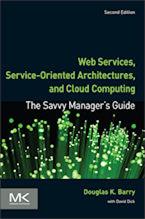Web Services Flow Language (WSFL)
Web Services Flow Language (WSFL) is a language for the description of Web Services compositions. WSFL considers two types of Web Services compositions:
- The appropriate usage pattern of a collection of Web Services, in such a way that the resulting composition describes how to achieve a particular business goal; typically, the result is a description of a business process
- The interaction pattern of a collection of Web Services; in this case, the result is a description of the overall partner interactions
WSFL uses WSDL for the description of service interfaces and their protocol bindings. WSFL also relies on the Web Services Endpoint Language (WSEL).
Organization: IBM
Context for Web Services Flow Language (WSFL)
Related Articles for Web Services Flow Language (WSFL)
- Business Centric Methodology (BCM)
- Business Process Execution Language (BPEL)
- Business Process Query Language (BPQL)
- Business Process Specification Schema (BPSS)
- Business Transaction Protocol (BTP)
- Collaboration Protocol Profile/Agreement (CPP/A)
- Common Alerting Protocol (CAP)
- Content Assembly Mechanism (CAM)
- Partner Interface Process (PIP)
- RosettaNet Implementation Framework (RNIF)
- Wf-XML
- WS Choreography Description Language (CDL)
- XLANG
Author
Douglas K Barry
Principal
You may use this material for your work or classes. Reprint Policy. Be sure to check the menu at the left for other articles available on this site.
The Savvy Manager's Guide
Douglas K Barry is also the author of a book that explains Web Services, service-oriented architecture, and Cloud Computing in an easy-to-understand, non-technical manner.
Web Services, Service-Oriented Architectures, and Cloud Computing: The Savvy Manager's Guide (Second Edition)
by Douglas K Barry with David Dick
This is a guide for the savvy manager who wants to capitalize on the wave of change that is occurring with Web Services, service-oriented architecture, and—more recently—Cloud Computing. The changes wrought by these technologies will require both a basic grasp of the technologies and an effective way to deal with how these changes will affect the people who build and use the systems in our organizations. This book covers both issues. Managers at all levels of all organizations must be aware of both the changes that we are now seeing and ways to deal with issues created by those changes.

